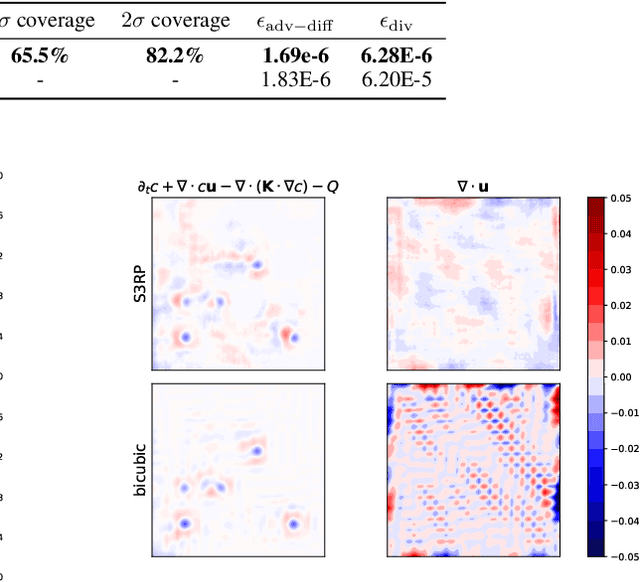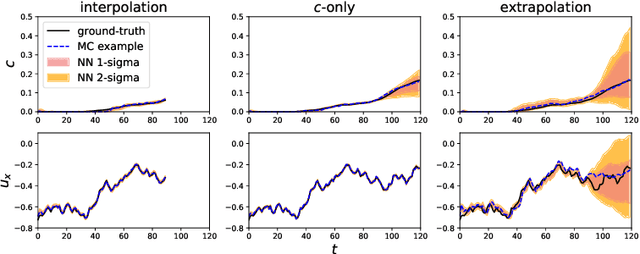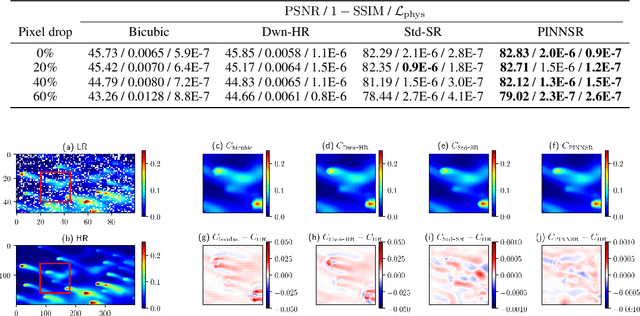Bruce Elmegreen
A 3D super-resolution of wind fields via physics-informed pixel-wise self-attention generative adversarial network
Dec 20, 2023Abstract:To mitigate global warming, greenhouse gas sources need to be resolved at a high spatial resolution and monitored in time to ensure the reduction and ultimately elimination of the pollution source. However, the complexity of computation in resolving high-resolution wind fields left the simulations impractical to test different time lengths and model configurations. This study presents a preliminary development of a physics-informed super-resolution (SR) generative adversarial network (GAN) that super-resolves the three-dimensional (3D) low-resolution wind fields by upscaling x9 times. We develop a pixel-wise self-attention (PWA) module that learns 3D weather dynamics via a self-attention computation followed by a 2D convolution. We also employ a loss term that regularizes the self-attention map during pretraining, capturing the vertical convection process from input wind data. The new PWA SR-GAN shows the high-fidelity super-resolved 3D wind data, learns a wind structure at the high-frequency domain, and reduces the computational cost of a high-resolution wind simulation by x89.7 times.
Machine Guided Discovery of Novel Carbon Capture Solvents
Mar 24, 2023Abstract:The increasing importance of carbon capture technologies for deployment in remediating CO2 emissions, and thus the necessity to improve capture materials to allow scalability and efficiency, faces the challenge of materials development, which can require substantial costs and time. Machine learning offers a promising method for reducing the time and resource burdens of materials development through efficient correlation of structure-property relationships to allow down-selection and focusing on promising candidates. Towards demonstrating this, we have developed an end-to-end "discovery cycle" to select new aqueous amines compatible with the commercially viable acid gas scrubbing carbon capture. We combine a simple, rapid laboratory assay for CO2 absorption with a machine learning based molecular fingerprinting model approach. The prediction process shows 60% accuracy against experiment for both material parameters and 80% for a single parameter on an external test set. The discovery cycle determined several promising amines that were verified experimentally, and which had not been applied to carbon capture previously. In the process we have compiled a large, single-source data set for carbon capture amines and produced an open source machine learning tool for the identification of amine molecule candidates (https://github.com/IBM/Carbon-capture-fingerprint-generation).
S3RP: Self-Supervised Super-Resolution and Prediction for Advection-Diffusion Process
Nov 08, 2021



Abstract:We present a super-resolution model for an advection-diffusion process with limited information. While most of the super-resolution models assume high-resolution (HR) ground-truth data in the training, in many cases such HR dataset is not readily accessible. Here, we show that a Recurrent Convolutional Network trained with physics-based regularizations is able to reconstruct the HR information without having the HR ground-truth data. Moreover, considering the ill-posed nature of a super-resolution problem, we employ the Recurrent Wasserstein Autoencoder to model the uncertainty.
Physics-Informed Neural Network Super Resolution for Advection-Diffusion Models
Nov 04, 2020



Abstract:Physics-informed neural networks (NN) are an emerging technique to improve spatial resolution and enforce physical consistency of data from physics models or satellite observations. A super-resolution (SR) technique is explored to reconstruct high-resolution images ($4\times$) from lower resolution images in an advection-diffusion model of atmospheric pollution plumes. SR performance is generally increased when the advection-diffusion equation constrains the NN in addition to conventional pixel-based constraints. The ability of SR techniques to also reconstruct missing data is investigated by randomly removing image pixels from the simulations and allowing the system to learn the content of missing data. Improvements in S/N of $11\%$ are demonstrated when physics equations are included in SR with $40\%$ pixel loss. Physics-informed NNs accurately reconstruct corrupted images and generate better results compared to the standard SR approaches.
 Add to Chrome
Add to Chrome Add to Firefox
Add to Firefox Add to Edge
Add to Edge